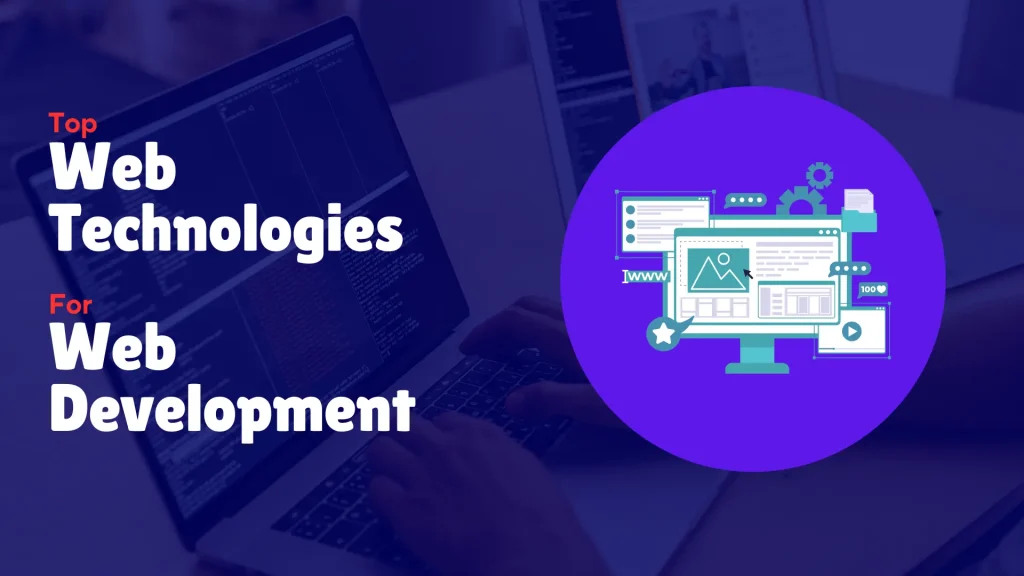Top Web Development Technologies in 2025 are shaping the future of how websites and applications are built. Staying updated with these technologies is crucial for businesses looking to remain competitive and deliver exceptional user experiences. For comprehensive and customized web solutions, you can explore expert services at PWHS Services.
In this comprehensive guide, we’ll cover the top frontend and backend technologies dominating the web in 2025 — including frameworks, libraries, languages, and their use cases — complete with easy-to-read bullet points and comparison tables.
Frontend Web Development Technologies in 2025
Front-end development is all about how a user interacts with a website or application. A solid frontend stack ensures a responsive, fast, and user-friendly interface.
1. React.js
React is still a top choice in 2025, thanks to its flexibility and huge developer community.
Why Developers Love It:
Reusable component-based structure
High performance with Virtual DOM
Maintained by Meta (Facebook)
Seamless integration with TypeScript
Best For:
Single Page Applications (SPAs)
Dynamic dashboards
Interactive UIs
2. Vue.js
Vue remains a favorite for developers who want simplicity and speed in one package.
Features:
Progressive and beginner-friendly
Flexible integration into projects
Excellent performance and lightweight
Strong community support (Nuxt.js, Pinia)
Use Cases:
Admin panels
Ecommerce interfaces
Real-time web apps
3. Svelte
Unlike React and Vue, Svelte compiles at build time, delivering ultra-fast performance.
Highlights:
No virtual DOM
Smaller JavaScript bundles
Cleaner, minimal syntax
Great for mobile-first and performance-sensitive apps
4. Tailwind CSS
Tailwind CSS is the top CSS utility framework used to build modern and responsive UIs rapidly.
Benefits:
Utility-first classes for faster styling
Customizable with config files
Responsive design baked in
Integrates perfectly with React, Vue, Svelte, etc.
5. Angular
Angular is a full-fledged front-end framework maintained by Google.
Strengths:
TypeScript-based
Two-way data binding
CLI tools for efficient scaffolding
Strong for enterprise-level apps
Perfect For:
Enterprise portals
Progressive Web Apps (PWAs)
Banking and healthcare apps
| Technology | Type | Key Strengths | Ideal Use Case |
|---|---|---|---|
| React.js | JavaScript Library | Fast rendering, reusable components | SPAs, Dashboards |
| Vue.js | Framework | Lightweight, easy integration | Real-time apps, admin panels |
| Svelte | Compiler | Fast performance, clean syntax | Mobile-first projects |
| Tailwind CSS | CSS Framework | Utility-first, fast styling | SaaS, product UIs |
| Angular | Framework | Enterprise-ready, CLI tools | Complex apps & PWAs |
Backend Web Development Technologies in 2025
Backend development powers the logic, database, and server-side architecture. In 2025, backend stacks must be secure, scalable, and fast to handle dynamic content and user interactions efficiently.
1. Node.js & Deno
Node.js continues to dominate, while Deno is rising due to its improved security and modern features.
Node.js Key Features:
Built on Chrome’s V8 engine
Event-driven, non-blocking I/O
Vast npm package ecosystem
Ideal for real-time apps
Deno Advantages:
Secure by default (no file/network access without permission)
Native TypeScript support
Cleaner dependency management
Built by the creator of Node.js
2. Python (Django & FastAPI)
Python remains a top backend language due to its readability and rich frameworks.
Django:
Full-stack framework
Built-in admin panel, authentication
Secure and scalable
Great for MVPs
FastAPI:
Async-ready, ultra-fast
Automatic API documentation
Minimal codebase
Perfect for AI and machine learning integrations
3. Ruby on Rails
RoR still stands tall for rapid MVP development.
Features:
Convention over configuration
Built-in tools like ORM, routing, and scaffolding
Active community
Best For:
Startups
SaaS platforms
Membership sites
4. PHP with Laravel
PHP remains widely used, especially with Laravel making development elegant.
Laravel Features:
Clean MVC structure
Blade templating engine
Built-in authentication, routing, queue, cache
Composer for easy package integration
Use Cases:
E-commerce platforms
Content management systems
Business websites
| Technology | Type | Highlights | Ideal For |
|---|---|---|---|
| Node.js | Runtime | Fast, scalable, JavaScript-based | APIs, real-time apps |
| Deno | Runtime | Secure, modern, TypeScript-native | Next-gen server apps |
| Django | Framework | Secure, batteries-included | Data-driven websites |
| FastAPI | Framework | Async-ready, fast, developer-friendly | AI/ML APIs, microservices |
| Ruby on Rails | Framework | Rapid development, convention-based | MVPs, SaaS |
| Laravel | Framework | Elegant syntax, built-in tools | Business sites, portals |
Why Staying Updated Matters in 2025
With the emergence of WebAssembly, Edge Computing, and AI-enhanced web experiences, staying current with tech trends is essential.
Key Reasons to Stay Updated:
Better Performance & Speed
Improved Security Practices
Optimized for Mobile & PWA
Scalable for Future Growth
Competitive Edge in the Market
Need Expert Help With These Technologies?
If you’re looking to implement the top web development technologies in 2025 for your next project, it’s crucial to partner with professionals who stay ahead of the curve. At PWH Services, you’ll find cutting-edge web solutions tailored to meet modern demands—whether you’re building a dynamic frontend, a powerful backend, or a fully responsive e-commerce platform.
Final Thoughts
Choosing the right web development technologies in 2025 depends on your project needs, scalability goals, and team expertise. Use the tables and comparisons above to decide whether you need:
A blazing-fast front-end like React or Svelte
A robust backend like Node.js, Django, or Laravel
Rapid styling with Tailwind CSS
Or enterprise-level tools like Angular
Need Help Choosing or Implementing the Right Stack?
Let me help you build a modern, scalable, and high-performance website or app using the best tech of 2025.
👉 Contact me today to get started!


